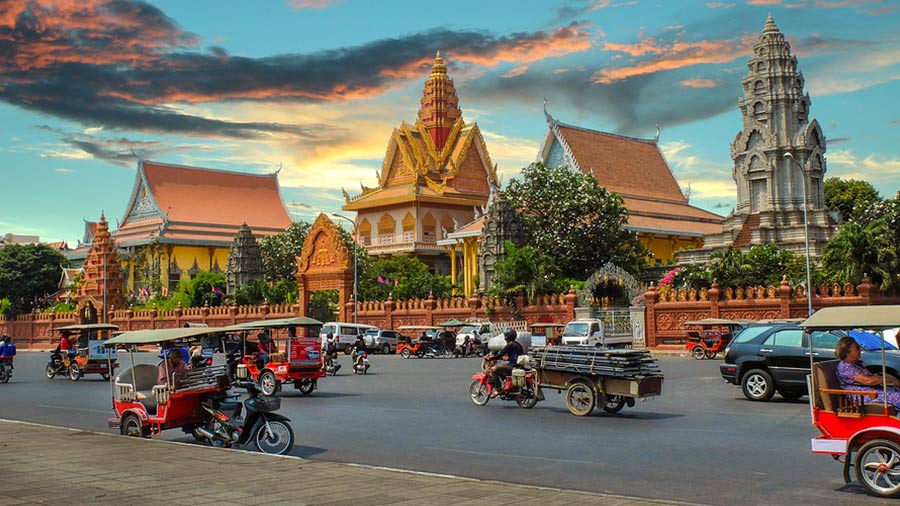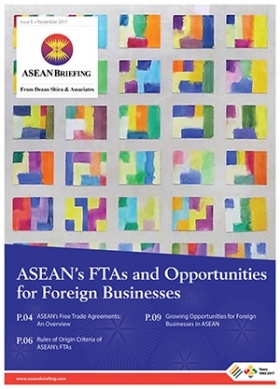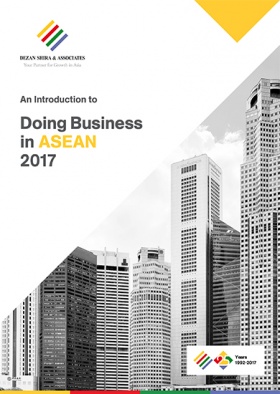Cambodia’s Investment Outlook for 2018
By: Vasundhara Rastogi
Cambodia is among the fastest economies in the world, registering a stable economic growth rate of 6.9 percent to 7.6 percent every year, over the last 10 years. Though relatively less developed than its neighboring countries, Cambodia presents huge opportunities for foreign investors. Cambodia is known for its macroeconomic stability, low-cost labor, competitive investment incentives, and a pro-business government. Besides, it has the most favored nation (MFN) and generalized system of preference (GSP) status that gives it a preferential access to the world’s most lucrative markets such as Europe, North America, Korea and Japan. Cambodia has also signed numerous trade agreements, such as the US Cambodia Trade and Investment Framework Agreement (TIFA) in 2006 and ASEAN Free Trade Agreement (AFTA) starting from 2015, that facilitate and promote greater trade and investment between signatory countries.
![]() RELATED: Pre-Investment and Market Entry Advisory from Dezan Shira & Associates
RELATED: Pre-Investment and Market Entry Advisory from Dezan Shira & Associates
Investment climate
Cambodia offers potentially rewarding opportunities for investment to foreign companies. The country has an open and liberal foreign investment regime with a relatively pro-investor legal and policy framework. Besides, the country is located at the center of Association of Southeast Asian Nations (ASEAN) which offers opportunities to small and mid-level investors for integration into regional and global value chains.
Some of the most lucrative incentives for foreign investors include 100 percent foreign ownership of companies, corporate tax holidays of up to eight years, a 20 percent corporate tax after such period, duty-free import of capital goods, and no restrictions on capital repatriation. In addition, companies investing in the country can take advantage of a one-stop service for the swift process of investment applications; full import and export duty exemptions for investment projects that are registered as quality investment projects (QIPs) with the Council of Development of Cambodia (CDC); employment allowances; and access to special economic zones with one-stop customs processing among other incentives. Further, small and medium enterprises, with low-level of startup capital can also enjoy foreign investment incentives. The CDC requires a qualified investment project on manufacturing and production to have a minimum investment of US$200,000 to US$500,000, much lower than other neighboring countries. Some of the country’s leading investors are China, South Korea, Vietnam, Malaysia and Taiwan. Between 2011 and 2015, China accounted for about 70 percent of the total industrial investment in Cambodia. Lack of transparency in the legal system, shortage of energy supply and infrastructural problems, however, remain significant obstacles to foreign investment.
Economy
Cambodia has a strong economy that greatly benefits from its stable macroeconomic environment and improvements in productivity at the nation’s manufacturing centers.
The garment industry represents the largest share of Cambodia’s manufacturing sector, accounting for 80 percent of the country’s exports. In 2016, Cambodia’s garment exports were worth US$6.3 billion and reached US$4.9 billion in the first seven months of 2017. The sector employs over 600,000 workers in the country. In 2018, however, the industry is expected to slow down following increased competition from lower-cost or more efficient Asian rivals such as Vietnam, and the impact of elections this year. On the construction side, the country received a total investment of 4.94 billion U.S. dollars in the first six months of 2017, up by 27 percent over the same period last year.
Other important economic sectors include agriculture, which is the traditional mainstay of the Cambodian economy; tourism; and construction.
Key industries
Owing to its plentiful land and cultural resources, low-labor costs, and investment-friendly environment, Cambodia offers great business opportunities in the following industries: agribusiness and food processing; tourism infrastructure and resorts; garment manufacturing; construction and construction material, household goods and appliances; used cars and automotive parts; power generation equipment and power transmission infrastructure; pharmaceuticals; and medical supplies and equipment.
 RELATED: Cambodia’s Garment Manufacturing Industry
RELATED: Cambodia’s Garment Manufacturing Industry
Outlook 2018
Cambodia’s economy will continue to expand at a healthy pace this year. Both Asian Development Bank and the World Bank, in their recent reports, forecast the country to grow between 6.9 to 7.1 percent, supported by a favorable global and regional outlook, export diversification, strong construction and tourism activities, and supportive fiscal policy. Nonetheless, risks from election-related uncertainty remain that could potentially impact investors and business confidence. For instance, following the crackdown on the dissent and opposition to the rule of Prime Minister Hun Sen in the lead-up to July’s national elections, Cambodia may face trade sanctions from the west.
About Us
ASEAN Briefing is produced by Dezan Shira & Associates. The firm assists foreign investors throughout Asia and maintains offices throughout ASEAN, including in Singapore, Hanoi, Ho Chi Minh City and Jakarta. Please contact us at asia@dezshira.com or visit our website at www.dezshira.com.
- Previous Article La zone de libre-échange numérique de la Malaisie
- Next Article Singapore’s Chairmanship: Prospects for ASEAN in 2018







